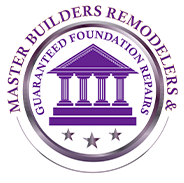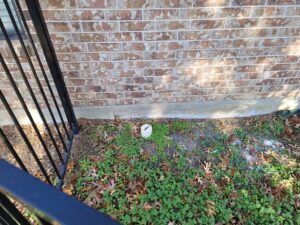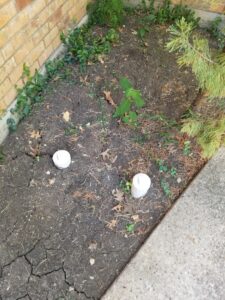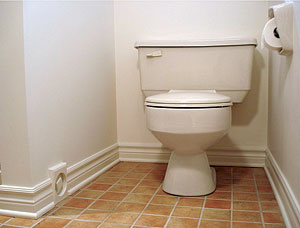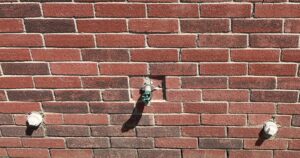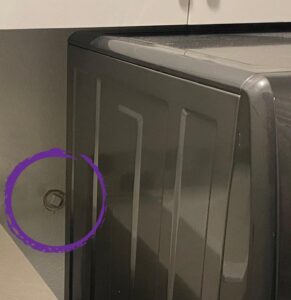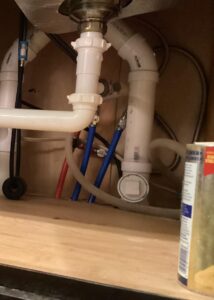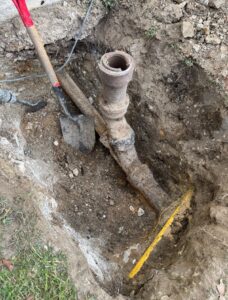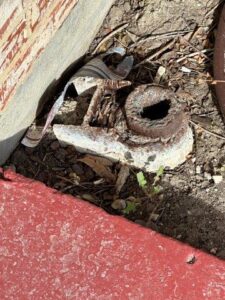PLUMBING
Experienced. Dependable. Trustworthy.
Foundation repair will require a plumbing test anytime the structure is moved, whether or not new piers are being installed or existing piers are being adjusted. Plumbing tests check to make sure that there are no leaks after foundation repair. Leaks can compromise the structural integrity of the home and any previous foundation work completed. We have plumbers on staff to serve you and answer any questions that you may have to better protect your investment.
Services Offered:
- Hydrostatic Sewer Tests
- Hydrostatic Domestic Testing
- Leak Isolations (Domestic & Sewer)
- Slab Leak Repairs
- Pier & Beam Repairs
- Spigot Repairs
- Sewer Auger
- Hot Water Heater Installation
- New Plumbing
- Shower Conversions
- Tub Replacements
Plumbing Tests
Plumbing tests are the first step in determining whether or not you have a problem with your plumbing. An undetected leak or unrepaired leak that is left under the foundation of a home can cause structural problems if left untreated. These structural complications brought on by leaks can lead to foundation or structural issues.
The best way to be proactive about your plumbing and protect your home from further complications is to have plumbing tests done at the following times:
- If you have higher than usual water bills
- If you have reoccurring sewer pipe stoppage issues
- Before buying a new home
- After any work on the structural integrity of your home
- Prior to any mudjacking/pressure grouting/foam injections
*An annual plumbing test is highly recommended for maintenance purposes*
The plumbing tests that we perform are:
- Hydrostatic Test – Performed on the Sanitary system of a Slab foundation home.
- Visual Test – Performed on the Sanitary system of a Pier and Beam home.
- Static Pressure Test – Performed on the Domestic system of any home.
Domestic and Sanitary Plumbing Tests
There are two types of plumbing systems in the home. Sanitary, which is also referred to as the Sewer System, and the Domestic which is also known as your Freshwater System.
When we perform a hydrostatic test on the Sanitary System, we insert a rubber ball into the mainline just outside the home either through the mainline clean-out, or possibly by removing a toilet and inserting the ball through the toilet drain. Once positioned properly, the ball is then inflated which blocks off the mainline, preventing any water from exiting the home. All the drain lines under the home are then filled with water to the top of the clean-out or toilet whichever we are testing from. Once full, we simply turn the water off and monitor the water level for approximately 10 to 20 minutes. If the water level stays at the top of the pipe, there is no leak. If the water level drops from the top of the pipe, there is a leak.
In order to perform a test on the Domestic System, a pressure gauge is installed on an outside water spigot or possibly on the washing machine connection inside the home. The spigot is then opened allowing the gauge to measure the city pressure. With the spigot still in the open position, the water is then turned off at the meter, or possibly the homeowner shut-off valve which is usually located outside and near the edge of the home. Once the supply to the home is turned off, the gauge is then monitored for approximately 10 minutes looking for any pressure loss. If no pressure loss is seen on the gauge, we would call that a “passing test”. If a pressure drop is noted, this would indicate potential leak(s) and a “failed test”.
Leak Isolation
After a hydrostatic test on the sanitary system or a static pressure test on the domestic system has been performed and it is determined that there is a leak, the next step would be to get a Leak Isolation test done on the property. A leak isolation test is how plumbers determine where the leaks are located throughout each individual system.
Domestic System Leak Isolation
The first step in performing this test is to turn off the water supply to the home. Once the water supply is turned off, air is pumped through the lines in order to expel any remaining water. When this is accomplished, the plumbers may use a special piece of equipment called a ‘Geophone’. The Geophone is a listening device that allows the plumbers to hear air escaping from the area of the leak. The plumber will then mark the leak on a map as reference for the repair crew.
Sanitary System Leak Isolation
This test is somewhat similar to a hydrostatic test. Instead of testing the entire system at one time, the system is divided into sections using rubber balls to block different areas. When we find an area that won’t hold water, we continue to move the balls down the pipe filling it with water as we go. We record the sections progressively until we can isolate the leak(s) to their specific area(s). A map of the home will be drawn containing the route of the existing sanitary system and the leak’s position in the system.
Leak Repairs
Why do I need to repair the leak?
Getting leaks repaired is essential to the structural integrity of the home. When water gets below a slab and stays there, it can compromise the foundation and soil stability that the home sits on. This can cause various types of cracks, humps, and depressions in the floor. Windows and doors may be also compromised and may not open and close as they should.
Water leaking under the home can alter the moisture content of the soil supporting the structure. Since foundations rely heavily on soil stability, any change in moisture can lead to differential movement, soil expansion, or erosion—each of which can compromise structural integrity.
In Pier and Beam homes, water leaks can saturate the crawlspace, weakening wooden beams, floor joists, and piers. This will promote rot, mold, and termite activity.
Concerns of Egress and Ingress
Insurance companies have stipulations about water Ingress and Egress. Since insurance bill differently depending on which one is covered, we recommend that you corroborate with our plumbing department so that we can provide you with a repair plan with the proper itemized list. Ingress and egress in this context are not about physically exiting a property but water causing mold and rot by water penetration.
- Ingress – water “entering” or penetrating a property through plumbing leaks, roofs, walls, faulty or blocked gutters, etc.
- Egress – water “exiting” or leaving a property through a drain or similar outlet.
Creating an access point
When leaks are located whether in the sanitary system or domestic system, an access point must be created. Generally, there are two ways of doing this:
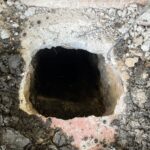
Tunneling
A 3’X3’ hole can be excavated on the outside of the structure, and a tunnel can be excavated from this point to access the leak.
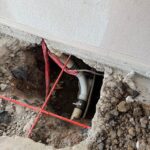 Breakouts
Breakouts
Unlike tunneling, a concrete breakout is interior excavation that gets directly to the leak through the floor of the structure.
Repairing the Pipes
Once the leak has been exposed, actual repair then commences with the damaged lines and fittings getting replaced. Schedule 40 PVC is the material used for sanitary repairs, and PEX is generally the material used for domestic repairs. After the repairs are completed, another hydrostatic test is performed to ensure the system integrity has been restored, and there are no additional leaks.
Before or After Foundation Repair
Fixing a leak is best reserved for after foundation repair. Sometimes the foundation lifting can cause more plumbing issues. Most foundation companies have it stated in their general conditions that they are not responsible for any leaks that result from work done on the house. We recommend contacting the foundation company that holds the warranty in order to determine the best course of action. For example, MBR Guaranteed Foundation Repairs will want to locate the leak, then send out a representative before the leak is fixed.
Cleanouts
What is a Cleanout?
A Cleanout is a part of the sewer system that people use in order to conduct plumbing tests and blockages in the sewer system. The cleanout is a piece of pipe that sticks out of the ground generally 3-4 inches, and is usually located near the structure, often in a flower bed. On occasion, a house may have an additional cleanout located in another area, but the most commonly used is the one that ties into the mainline as it exits the structure. When doing leak isolation, we require a double sweep. A single-type cleanout will have to be replaced with a double.
Locating a Cleanout
Some houses are not built with a cleanout. Some houses that do have a cleanout don’t have a visible one. If this is the case, the plumber will have to begin the process of locating the cleanout. The plumber will have to run their camera through the mainline, often through the shower or the toilet, in order to find the existing cleanout. After finding the general area where the cleanout is, the plumber can then excavate the suspected area to expose the cleanout.
Installing a Cleanout
If there is no cleanout on the property, the plumber will have to install one. The process of installing a cleanout begins in much the same manner as locating one. The plumber will need to find where the main sewer line exits the structure. Once the mainline is located and exposed, the cleanout will then be installed which is generally close to the side of the home.
Additional Pertinent Information
for Plumbing
Not all cleanouts serve the same purpose
Wall Cleanouts are not used for plumbing tests. They serve a completely different purpose which is to clean.
Cast-Iron Pipes
Replacing cast iron with PVC piping is often the more reliable and cost-effective solution. All cast-iron plumbing is past its shelf life. It is a matter of “when” these pipes break and cause issues.
Example Installation
This is a before and after of a cast-iron cleanout being replaced with a double sweep. Two reasons for the replacement: (1) the cast-iron failed to hold water and (2) could not compensate for the pool. This cleanout is different from others as it also houses the pool overflow in addition to its normal function.
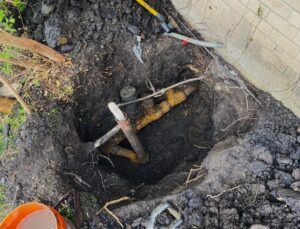


Schedule Your No-Charge Estimate
Whether you are a homeowner or a realtor with deadlines, we are determined to make the repair process meet your every need. Contact us now and let’s get started!
